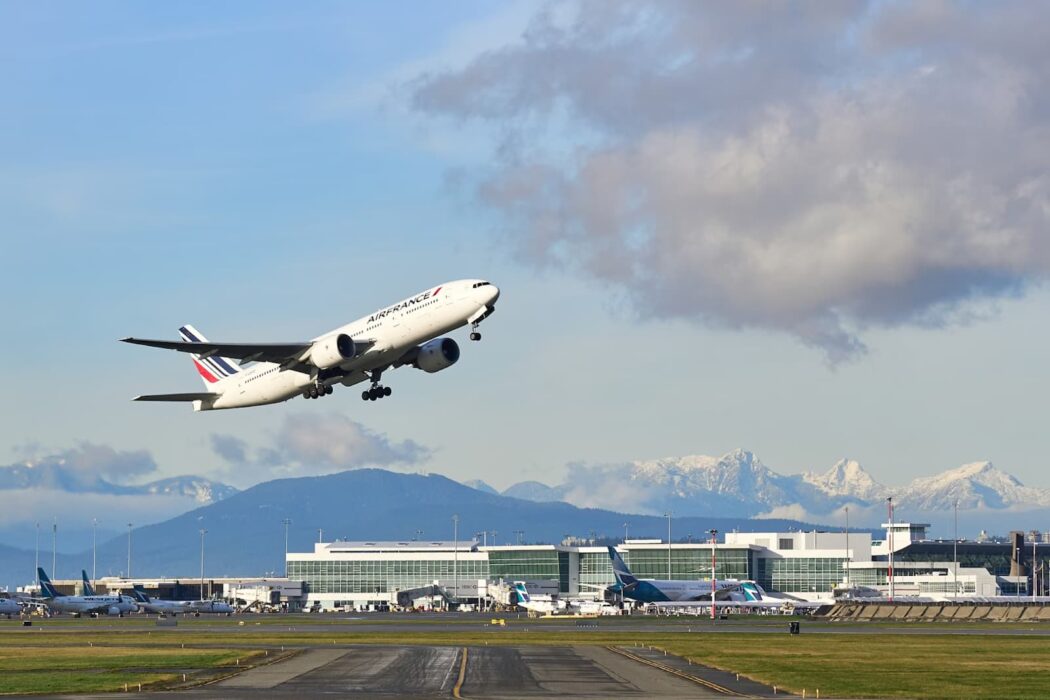Aviation is a vital element of the world economy, promoting international commerce, tourism, and investments. The interplay between air travel and financial markets is complex and multifaceted, with changes in aviation having significant ripple effects on the economy. In recent years, breakthroughs in technological fields, such as Flightradar24, have revolutionized how we monitor and manage air traffic, providing real-time data that enhances efficiency and safety. These technologies not only improve the passenger experience but subsequently impact financial aspects like airline profitability, fuel consumption, and market dynamics.
Flight radars, for instance, have become an indispensable tool for airlines, airports, and passengers alike. By offering real-time tracking of flights, these systems help optimize flight paths, reduce delays, and improve overall air traffic management. This boosted efficiency translates to cost savings for airlines, which can then be passed on to consumers in the form of lower ticket prices. Additionally, better-managed air traffic contributes to fuel savings and reduced emissions, aligning with worldwide sustainability goals.
The Role of Air Travel in Global Trade and Investment

Global commerce is dependent on air travel, which facilitates the rapid movement of products and people across international boundaries. The air transport sector provides millions of jobs worldwide, from airline personnel and airport employees to roles in tourism and international commerce. By connecting businesses with markets and suppliers with customers, aviation facilitates economic growth. Perishable goods like fresh produce and pharmaceuticals rely on air transport to reach international markets quickly, ensuring their quality. The efficiency and reliability of air travel are vital for maintaining global supply chains.
Moreover, air travel stimulates investment by improving accessibility and connectivity. Regions with well-developed air transport networks attract more foreign direct investment (FDI) as they are seen as more accessible and business-friendly. Airports often become hubs of economic activity, with surrounding areas developing into business districts hosting hotels, conference centers, and other enterprises. This “aerotropolis” phenomenon exemplifies how aviation infrastructure drives regional economic development.
An aerotropolis functions as a mini-city built around an airport, where businesses and services thrive due to their proximity to air travel facilities. This setup attracts industries from logistics and manufacturing to hospitality and retail, creating a vibrant economic ecosystem. Companies within an aerotropolis benefit from reduced transportation costs and increased efficiency, accessing air freight services and international travel connections quickly. This proximity to air travel infrastructure also makes these regions more attractive to global investors, who value the ease of doing business and rapid market access.
Apart from promoting immediate economic growth, air travel supports the broader tourism industry, a remarkable contributor to many national economies. Tourists traveling by air generate revenue for airlines, airports, and related services such as hotels, restaurants, and tourist attractions. This influx of visitors stimulates regional economies and adds employment in the travel and hotel sectors. For many countries, especially those with limited natural resources or other economic activities, tourism driven by air travel is a vital source of income.
Air travel also plays a crucial role in international commerce by enabling face-to-face business meetings, trade negotiations, and conferences. In today’s globalized world, personal interactions are often necessary to build trust, negotiate deals, and establish business relationships. By providing a means for executives and business professionals to travel quickly and efficiently, air travel facilitates the personal connections that underpin successful international trade and investment.
On top of that, the aviation sector as a whole is a significant source of business activities and innovation. The development and manufacturing of aircraft involve a complex supply chain that supports numerous industries and generates substantial economic value. Breakthroughs in aviation technology, e.g. more fuel-efficient engines and advanced avionics, have broader economic implications. These innovations lead to cost savings for airlines, lower ticket prices for passengers, and reduced environmental impacts, all contributing to the overall economic benefits of air travel.
Economic Impacts of Aviation Engineering Progress

Technological advances in aviation have substantial ramifications for the sector and the broader economy. Innovations such as more fuel-efficient aircraft, advanced navigation systems, and enhanced flight tracking technologies contribute to operational efficiency and cost savings. These improvements help airlines manage their fleets more effectively, optimize routes, and reduce maintenance costs, thereby enhancing profitability.
The adoption of more modern and efficient aircraft has led to consequential reductions in fuel consumption and emissions. These planes are designed to be more aerodynamic and use lighter materials, which contribute to their improved performance. Thus, airlines can offer more competitive fares and expand their route networks, benefiting clientele and boosting tourism.
Flight tracking systems and other air traffic management technologies likewise play a crucial role in improving safety and efficiency. By providing accurate and real-time data on flight positions, these systems help prevent collisions, manage congested airspace, and coordinate more efficient flight paths. This not only reduces the risk of accidents but also minimizes delays and disruptions, which can have costly implications for both airlines and passengers.
Improved air traffic management can lead to better on-time performance for airlines, enhancing customer satisfaction and loyalty. This, in turn, can result in higher passenger volumes and increased revenue for airports and related businesses. Additionally, the reduced environmental impact of more efficient aircraft and flight operations supports broader sustainability goals, which are increasingly important to investors and policymakers. These technologies help to make the aviation sector more sustainable by lowering fuel usage and emissions, which aligns with worldwide efforts to address climate change.
Aviation and Market Changes
Innovations in the avia sector have a substantial impact on financial markets. Changes in fuel costs, for example, directly affect airline operating expenses since fuel is a major part of their costs. Whenever fuel costs increase, airlines suffer more expenditures, which often leads to increased ticket prices and potential reductions in passenger demand. In opposition, airlines may see cost savings as a result of decreased fuel costs, allowing them to offer more competitive fares and potentially increase their market share.
The performance of airline stocks is also a useful indicator of broader economic trends. Airlines are often considered a barometer of consumer confidence and overall economic health because air travel demand typically correlates with economic activity. During moments of prosperity in the economy, increasing wealth and company-wide operation drive higher demand for air travel. Conversely, poor economic times may result in fewer passengers and decreased travel expenditures.
Aviation is highly sensitive to external shocks, as revealed by the COVID-19. Travel restrictions and reduced passenger demand during the pandemic created unprecedented obstacles for airlines, leading to significant financial losses and widespread restructuring within the industry. However, the subsequent recovery in air travel demand has highlighted the resilience of the aviation sector and its importance to the worldwide financial system.
In addition to fuel prices and economic circumstances, geopolitical events, technical advances, and regulatory changes affect the aviation sector and financial markets. E.g., geopolitical tensions can lead to increased security measures and changes in air routes, affecting airline operations and profitability. Technological advancements can improve operational efficiency and reduce costs, while regulatory changes can influence industry practices and competitive dynamics.
Furthermore, consumer behavior influences the market. Shifts in travel patterns, such as the growing preference for budget airlines or increased demand for sustainable travel options, can affect airline strategies and market performance. Airlines have to adjust to altering consumer demands in order to stay competitive and profitable.